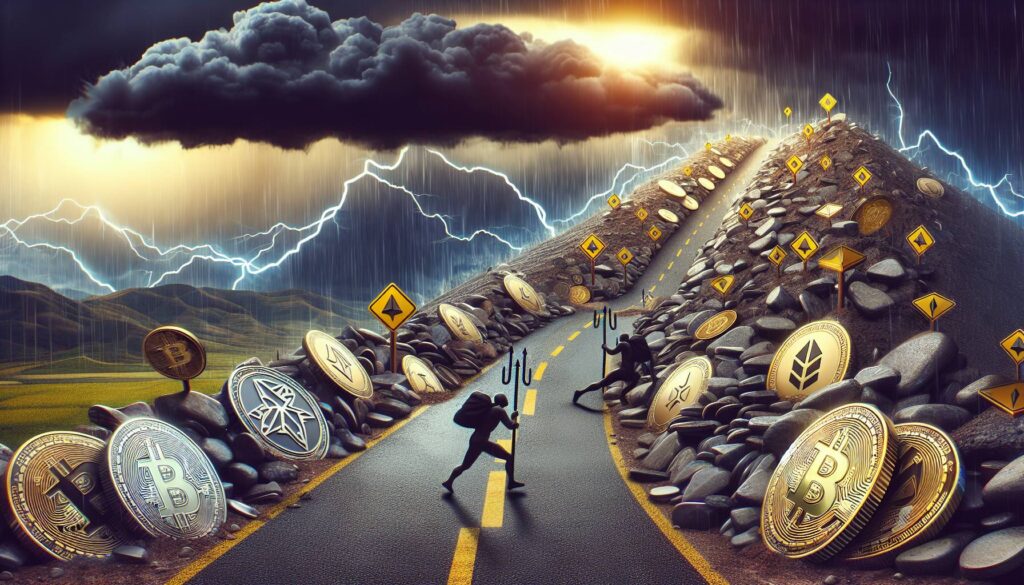Valuing blockchain networks today resembles the challenges faced by investors during the early days of the internet. In the 1990s, the focus was often on intangible metrics like “eyeballs,” leading to inflated valuations for companies that lacked revenue. This trend eventually culminated in a market crash, teaching valuable lessons about the importance of financial fundamentals. Fast forward to the present, and we find ourselves navigating a similar landscape within the blockchain space. Despite increased adoption and evolving infrastructure, there remains no universally accepted method for evaluating blockchain networks, as existing models often fall short of addressing their unique characteristics.
The evolution of valuation metrics over the decades is notable. Initially, the mid-1990s relied heavily on vague proxies like page views and user counts before shifting towards intricate financial metrics post-dot-com crash. By the mid-2000s, Software as a Service (SaaS) introduced a new framework emphasizing recurring revenues and customer relationship dynamics. The rise of platforms in the 2010s brought forth new criteria, focusing on network effects and user engagement. Today, operational efficiency and sector-specific benchmarks are paramount in tech valuations.
Despite these advancements, blockchain remains in a state of ambiguity regarding its valuation. Traditional financial metrics often fail to account for the dynamics of decentralized networks, with newer models struggling to gain traction. Proposals such as measuring a blockchain’s ‘velocity and flow’ through capital movement and usage patterns offer a fresh perspective, aiming to capture the real economic activity taking place. This holistic view may provide greater clarity and unlock potential within blockchain technology as it continues to unfold.

Valuing Blockchain Networks: Lessons from the Internet Era
Key Points:
- Historical Context: Valuing blockchain networks echoes the challenges faced during the early internet.
- Early Internet Valuations:
- Valuations based on metrics like page views and unique visitors rather than financial viability.
- The dot-com bubble highlighted the dangers of attention without monetization.
- Post-Crash Shift:
- Investors demanded proof of revenue and profitability after the dot-com crash.
- Survivors like Amazon and eBay redefined valuation metrics to include actual performance metrics.
- SaaS Model Emergence:
- Introduction of predictable revenue streams and operational metrics such as ARR and CAC.
- Shift towards valuing growth efficiency and customer retention.
- Platform Era Developments:
- Valuation methodologies evolved to include network effects and ecosystem depth.
- Companies began to be rewarded for strategic positions and dependency arising from their platforms.
- Current Valuation Trends:
- Focus on operational efficiency, profitability, and sector-specific performance metrics.
- Intangibles like AI ownership and infrastructure moats gaining significance in company valuations.
- Blockchain Valuation Dilemma:
- Lack of standardized methods to evaluate blockchain networks, often relying on outdated financial models.
- Need for metrics that better reflect the unique nature of blockchain as public infrastructure.
- Proposed New Framework:
- Valuing blockchain based on velocity and flow, emphasizing how assets move through the ecosystem.
- Model encompasses stablecoin turnover, NFT trading dynamics, and real capital reusability.
Deciphering Blockchain Valuation: Lessons from the Internet Era
The landscape of blockchain valuation unveils a compelling narrative reminiscent of the late 1990s internet boom. In this era, there was a frenzy over potential, with investors often valuing companies by nebulous metrics devoid of concrete profitability. Fast forward to today, and we face parallel challenges in determining the worth of blockchain networks amidst a burgeoning infrastructure and increasing adoption.
Competitive Advantages: The major advantage for blockchain networks is their potential to revolutionize transactions through decentralized systems, allowing for transparency and trustless interactions. This innovation could attract entities looking for cost-effective solutions and the ability to operate without intermediaries. On top of that, the failure of old valuation models like the “eyeballs” metric offers current blockchain enthusiasts a chance to redefine how value is perceived, potentially creating frameworks that are more akin to the operational efficiency seen in SaaS businesses today.
Disadvantages: However, just as the dot-com crash revealed the pitfalls of inflated valuations, the current blockchain ecosystem is susceptibly fragile. The lack of standardized valuation methods may deter traditional investors, as the reliance on untested economic models could lead to misguided assessments, paralleling the errors of the past. Existing frameworks—like MSOV or Onchain GDP—while insightful, are incomplete and can lead to further confusion rather than clarity.
This unsettled environment presents both opportunities and challenges for various stakeholders. Investors seeking stable and comprehensible metrics may find themselves frustrated or wary, particularly if they come from more traditional backgrounds where clear profit-driven models dominate. Conversely, blockchain innovators and startups could see a surge in enthusiasm, especially if they can leverage new models emphasizing capital velocity and utility. These adaptable frameworks may foster greater trust and interest in blockchain technology, leading to enhanced funding and strategic partnerships.
Meanwhile, those entrenched in established financial paradigms might struggle to grasp the intricacies of blockchain’s decentralized nature. They’re confronted with the dilemma of having to unlearn traditional valuation metrics, potentially leading to further friction as the market evolves.
Therefore, as the blockchain industry continues to mature, embracing a fresh perspective on valuation could establish a clearer path forward, benefiting innovators while offering challenges to those unwilling to adapt.















